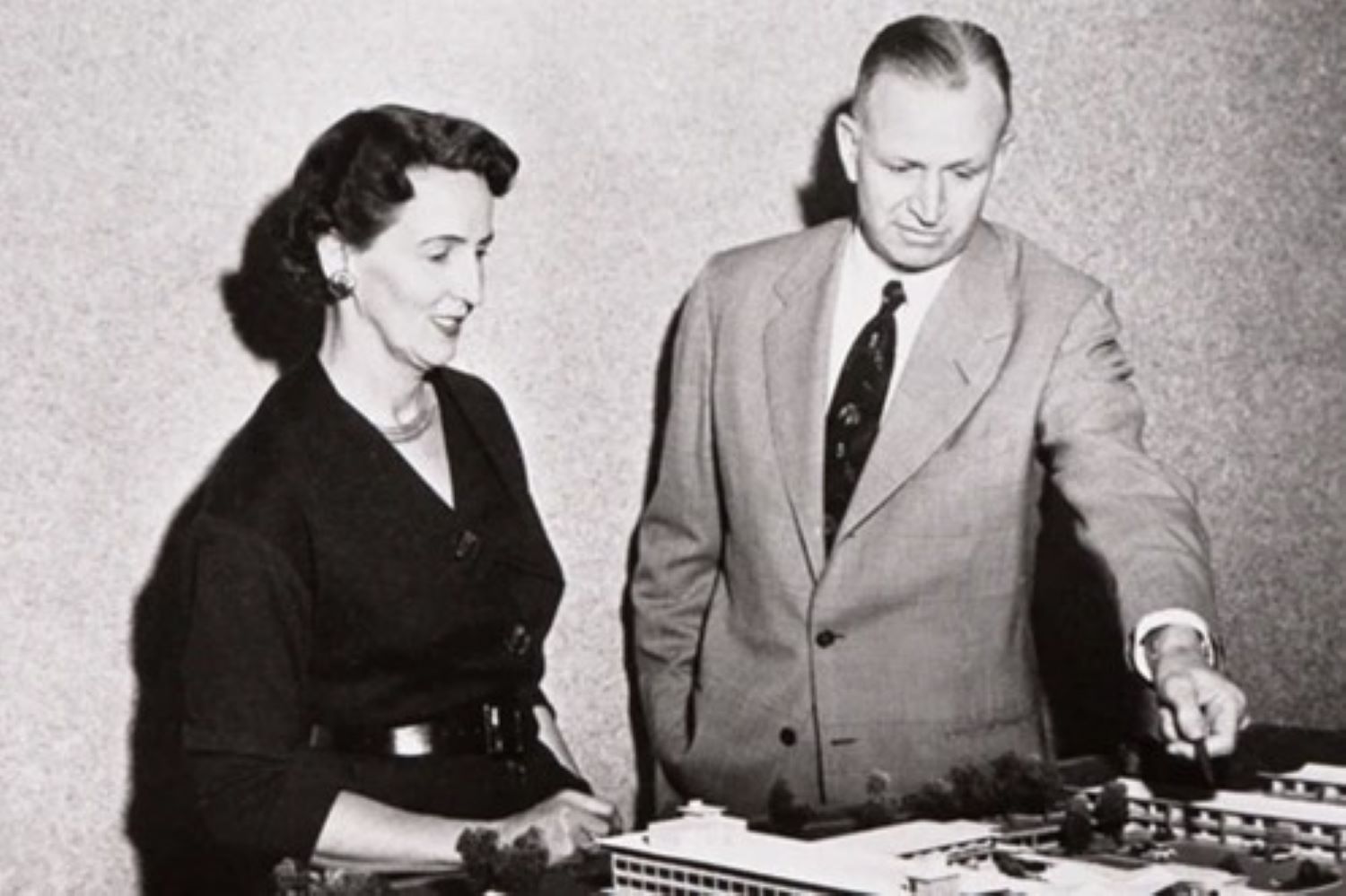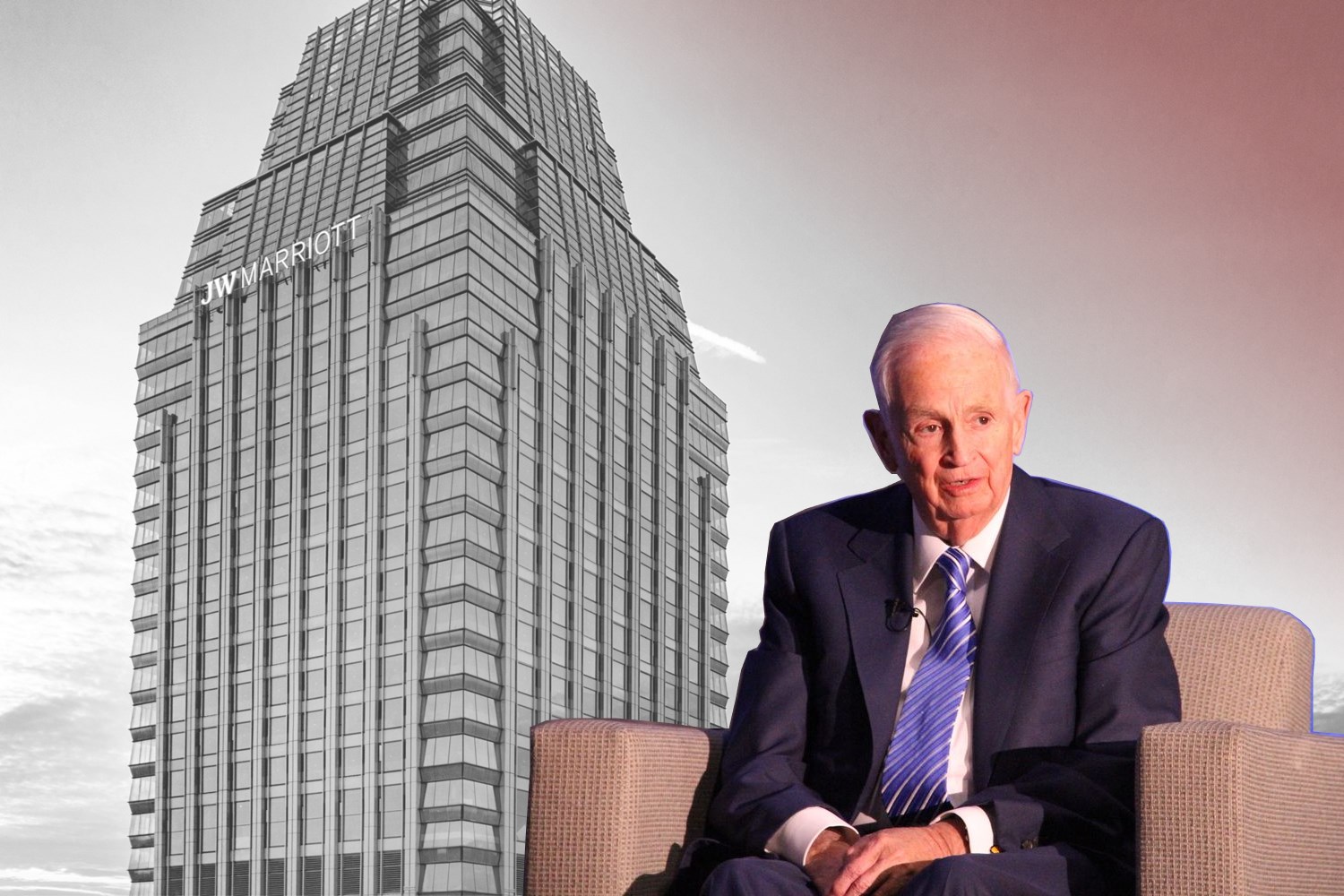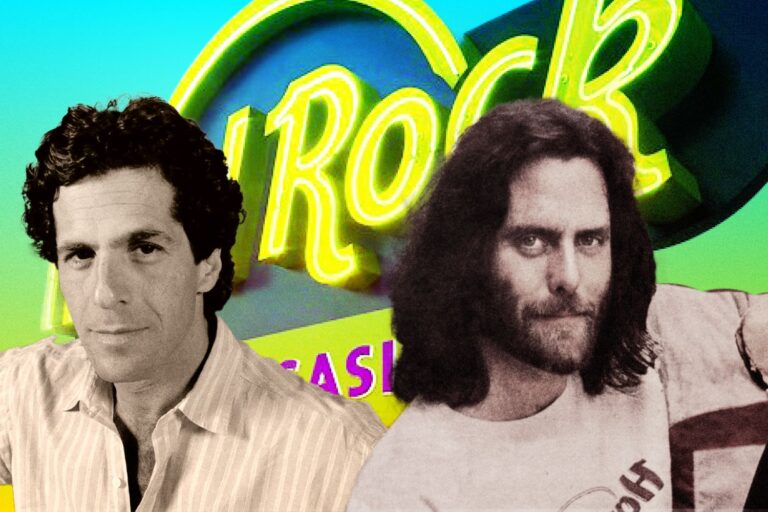Prioritizing “Human” Sheet over Balance Sheet, Marriott Evolves to a Behemoth
Without any shadow of a doubt, customer service counts, especially and essentially for the hospitality business. Providing excellent customer service assures that your new consumers will return and strengthen their relationship with your brand, service, or product. And smart strategy on it is a major driver of word of mouth.
That secret sauce appears to be utilized in the architecting journey of Marriot since the hotel chains have constantly changed to meet the needs of their customers. This strategy has been the key player for the hotel to expand to almost 8,000 properties worldwide.
Now, Marriott International is a global hospitality chain based in the United States that manages and franchises a large portfolio of hotels and lodging facilities. However, little do people know that the foundation and development of Marriott International kicked off with a 9-seats root beer stand in Washington D.C.
From A Single Root Beer Stand to A Hospitality Giant
Let’s go all the way back to 1927, the time when Marriott was founded.
That’s when a young man named J. Willard Marriott, while finishing up at university, devised plans to launch his own business thousands of miles away in the nation’s capital. At the end of his journey, the legend drove through sweltering, muggy Washington, D.C., and spotted a tailored-made market for A&W Root Beer.
He secured the A&W franchise for Washington, D.C. – plus Baltimore and Richmond – and headed East in the spring of 1927. Marriott and his partner Hugh Colton pooled $6,000 to purchase equipment and rent space for their small business. The couple launched their nine-stool root beer stand at 3128 14th Street, NW on May 20, 1927, the day aviator Charles Lindbergh made his historic transatlantic solo journey.
After launching his new company, Marriott returned to Utah barely two weeks later to attend another event that promised to change his life: his wedding to Alice Sheets. The couple married in Salt Lake City on June 9, 1927, one day after Alice graduated from the University of Utah. The honeymoon included a lengthy, hot, bumpy trip back to Washington, D.C. in Bill’s Model T Ford.

Alice intended to have minimal involvement with her husband’s new venture. However, the bride was soon drawn into practically every facet of the new enterprise. Her responsibilities varied from bookkeeping to gathering recipes for the “Hot Shoppe” menu and selecting decor for the company’s expanding network of sites.
As the Hot Shoppes grew, she began accompanying J. Willard on his daily site visits: “I used to go with him, sit in the car at night, and wait for him.” I’d be out on the walk, watching the curb service to see what they were up to.”
Despite the fact that the births of her two sons, J.W. “Bill” Marriott, Jr. (1932) and Richard (1939), kept Alice away from the company’s day-to-day operations, she remained a significant force behind major choices and events.
As the company evolved and diversified, a talent for assessing people and understanding business concepts proved vital. Alice’s extended term on the board of directors also provided her with a view on the business that only J. Willard could equal.
In the 1960s, her older son J.W. “Bill” Marriott, Jr., guided the company into the hotel sector with her full support. When J. Willard was battling with the choice to deliver the baton to his son as CEO in 1972, Alice’s soft-spoken but no-nonsense attitude helped her husband come to grips with leaving the baton after 58 years on board.
After inheriting his parents’ legacy, J.W. “Bill” Marriott, Jr. led the company for more than 60 years before retiring in May 2022, guiding it from a family-run root beer stand and restaurant to a global hospitality company with 8,000 properties across 30 brands in 139 countries and territories.
Raised in a family business, Bill Marriott is the descendant of good fortune, but what is more special about the way that his family culture in building a business that has been the core for the continuous wealth.
Bill Marriott is known throughout the industry for his hands-on management approach, which is based on his parents’ basic philosophy of putting people first. Marriott’s corporate culture stresses the importance of associates to the organization.
His father left the most important insight to him, “Take care of associates and they’ll take care of your customers,” he constantly advised Bill and Marriott’s managers, voicing a deeply held belief that remains the keystone of the company’s culture.
Now even J. Willard “Bill” Marriott, Jr., is no longer in material form, that message of him to the next Marriott’s management belongings still plays at the silver bullet in the success of the company. Let’s dive into this very tenet insight.
Put Employees First, then Customers Will Have Good Care
Every CEO discusses the significance of people, but Marriott has demonstrated it in a way that is unmatched in the hotel and motel sector.
According to Bill Marriott, “My dad started it all back in the ’30s when we had a root beer stand and then a restaurant. And one day the cook didn’t show up and he decided he better get a program going so he could retain his people and keep them happy.”
That’s why his father decided to hire a doctor to handle their healthcare, then a few years later, he hired a surgeon to handle their healthcare.

Starting from this, such mentality has always been Marriott’s core belief.
“Take good care of your people, they’ll take good care of the customer, and the customer will come back.”
Marriott values its employees. They are educated. They educate them. They offer them opportunities. Fifty percent of hotel chain general managers came from the hourly ranks, and they continue to advance.
Marriott is now all over the world, and the majority of senior people in the company and in the hotel chain themselves have had numerous opportunities to work with people and work very hard to nurture long-lasting relationships. Because Marriott knows they make the difference, especially in the hospitality business.
Marriott is not like a manufacturing assembly line. People are out there greeting guests, checking them in and out, serving them in restaurants, and cleaning their rooms, resulting in millions of contacts with guests every day.
First and foremost, they put people first, that’s a core for long-term success. Even so, a warm heart can’t get them enormous wealth if a good operation strategy to execute that meaningful message is absent. The hotel chains then have to pursue excellence, act with integrity, embrace change, and serve the world.
Grind Diemond with Powerful Instruments
Marriott began to architect its growth in the late 1980s adopting the model: one business, many brands. The company’s foresight in the hotel industry laid the groundwork for it to ultimately become the world’s largest hotel chain.
Marriott became the first lodging firm to have a portfolio of brands after the introduction of the first Fairfield Inn and Marriott Suites properties. After acquiring Residence Inn in 1987, the corporation also pioneered the extended-stay business.
Marriott split its operations in two in 1993, establishing Marriott International, a hotel management and franchising company, and Host Marriott organization, a hotel ownership organization.
During the shaping process, the strategy to attract customers has been implemented and adjusted constantly. Marriott International has efficiently developed itself in many target markets by catering to the individual needs of its clients.
Marriott’s fundamental product in its marketing mix is a type of hospitality services. Their product strategy encompasses all aspects of hotel management. They have around 30 brands, including well-known hotels such as Ritz-Carlton, Sheraton, and Renaissance.
The corporation has divided its brands into four categories: Luxury, Premium, Select, and Longer Stays. Customers can then choose hotels depending on their vacation plans and convenience.

Marriott International attempts to provide great guest experiences in all locations and across all channels across all of its branded hotels and resorts. It also works hard to establish new brands based on various themes that cater to both new and existing clients.
Next is about prices. Despite severe competitive price lowering, volume shrinking, and increased hotel supply, Marriott International is one of the few corporations that has been successful in maintaining pricing dominance.
Marriott International’s pricing varies depending on the hotel, customer, and region. The company’s primary goal is to provide a first-rate experience that exceeds client expectations for the amount they pay.
It has largely succeeded as the different hotel chains have been able keep up distinguished offerings in terms of their brand promise and brand appeal.
Besides, choosing the ideal place and distribution strategy has played a vital role for Marriott in its journey over the years. It has established itself in over 131 countries since its inception, with most of its hotels located in and around a country’s major cities and towns.
Having ranked top in the hotel “game” for decades, the name “Marriott” is self-explanatory. It is one of the beneficial outcomes of “word of mouth” marketing.
In recent years, Marriott International’s marketing strategy has revolved from offline to online. It has moved its emphasis to digital marketing rather than traditional marketing.
Marriott’s marketing effort focuses on highlighting the comfort, care, and wealth of the company’s upscale hotel chain. The adverts highlight the hotel chain’s magnificent rooms, hospitality services, and peaceful atmosphere.
Marriott’s marketing campaign strategy has so far succeeded in positively engaging its viewers, resulting in constant customer engagement growth, with memorable marketing campaigns that have grabbed people’s attention to the firm such as GoldenRule, Marriott Bonvoy, and The “Here” Anthem.
With a valuable core and brilliant strategies, Marriott has come a long, long way from the days of being known as a regional family restaurant chain, but their values haven’t budged an inch. However, success is not only about sweets and candies, but also bitterness and hardship that make the journey as a whole. What’s more noticeable is the way Marriot confronted these challenges.
Stay Bullish in Front of Ultimate Challenges
One of the most significant challenges was dealing with the aftermath of September 11, 2001 and the uncertain consequences it would have on the travel sector. Not to mention the implications for global expansion and the recovery of all Marriott associates and guests affected that day.
Also, the global economic slump that began in 2008, as well as a similar situation in the early 1990s, posed enormous challenges to overcome.
In 2008, they drew on past 1990s layoffs to deal with the human aspect of the equation once more. Some were unavoidable, but they were able to mitigate the pain by keeping a large number of workers on board with lower hours but full health coverage.

Recently, while the economic destruction wreaked by COVID-19 on the hospitality landscape has been well-documented, the impact reaches far beyond any hotel’s front doors.
“What many people don’t realize is that, while we are seen as a big company, our brands are really a collection of small businesses that support other small businesses in the local community,” notes Brian King, global officer for Marriott International.
“For example, the dry cleaner who comes in every day to pick up the hotel laundry and the person who comes in on Saturdays to DJ weddings, as well as the florist—they rely on us as much as we rely on them,” he continued.
As the severe impact of COVID-19 began to unravel in March and April 2020, Marriott was compelled to make large-scale workforce decisions.
“Like many companies in the travel sector, we had to furlough associates. It was the hardest thing I’ve ever done in 30 years in the business, because the impact on associates was due to something completely outside their control,” King recounts.
He added, “Marriott is a global company that’s made up of bellmen, housekeepers, desk clerks, and line cooks. At the core of our DNA is providing opportunity to help people build careers with our company. Getting our teams back to work is priority No. 1.”
However, there was no easy way out of this position. “There was no playbook for dealing with a pandemic at a global scale,” King adds. “But, if you start with just the balance sheet and not the ‘human sheet,’ I don’t think you’re leading.”
King remained optimistic about the future for Marriott during the exaggeration of the crisis, despite the pandemic’s outsized influence on the travel industry, in part because of the company’s value system.
During its lifetime, Marriott has been though many ups and downs. Instead of being panic, the company retains its positive viewpoint in front of these obstacles. Just do everything is what translated from their execution toward difficulties.
During the recent crisis, their recovery strategy was founded on the realization that going hyperlocal does not have to be a disruptive transformation effort. They have prioritized local consumers and worked to strengthen relationships across industry, technology, and digital partners in order to predict and address local demands.
But it’s not until the arrival of the pandemic that forced Marriott to digitally transform. In fact, the hotel has been adopting these advances since the rise of technology.
Lean to Tech to Optimize the Management Outcome
If there is a business that has the capacity to roll out high-tech hotels, it should be this particular one.
Today, customers can engage with Marriott however they please. They could be making a hotel reservation, planning a vacation, or checking in. Marriott provides these experiences via its website, app, in-person, or a combination of touchpoints.
To continue delivering excellent hotel experiences, Marriott aims to better understand how consumers interact. This entails altering how data is measured and analyzed. And bringing in the necessary knowledge to make it all happen.
When customers use their mobile key to enter the hotel, Marriott wants to know what makes the experience easy for them. The data is there to assist them in determining whether the experience is effective.
This mindset has driven Marriott to test different capabilities and features to offer quick information about hotel amenities, local dining options, transportation, or local attractions — at just the right moments to fuel a travel story that customers will keep telling.
If there is one piece of customer technology in which Marriott has invested, it is mobile devices. Marriott is investigating new methods for its properties to interact with customers’ mobile lifestyles.
Aside from interacting with television, visitors may use the Marriott Guest Services app to handle everything from checking in and out to requesting additional shampoo or a wake-up call – all without ever speaking to a Marriott employee, if they so desire.
Several major hotel chains have entered 2023 with technology partnerships to upgrade operations and services. And Marriott is not the exception.
Recently, Marriott International collaborated with Groups360 on software that simplifies the process of reserving meetings, event rooms and venues.
Historically, this has been a time-consuming process due to the necessity to book conference venues and guest rooms separately, taking into account the lower prices that sometimes accompany that type of business.









